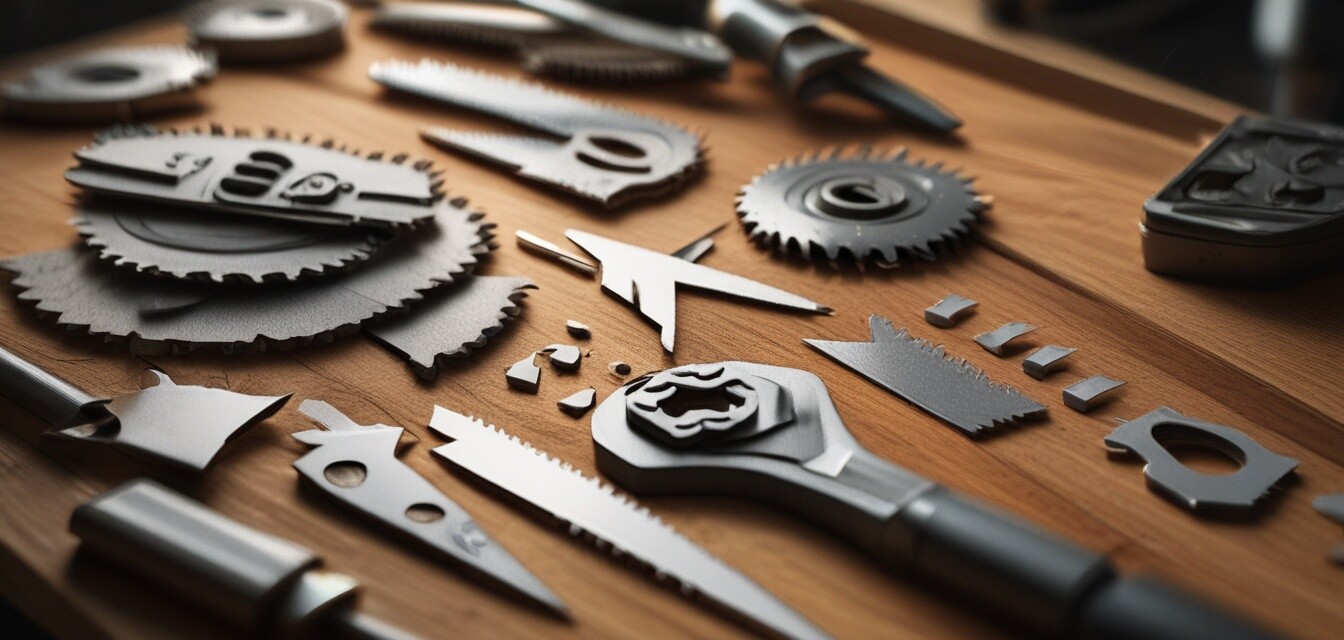
How to Choose the Right Blade for Your Power Tool
- Choosing the right blade enhances performance and safety.
- Different blades are designed for specific materials and tasks.
- Consider tooth configuration, blade material, and cutting speed.
Selecting the proper blade for your power tool can make a significant difference in your projects. Whether you’re a contractor or a DIY enthusiast, understanding how to choose the right blade will enhance your productivity and ensure a cleaner finish. In this guide, we'll help you navigate the various types of blades available for power tools and how to select the one that fits your needs.
Understanding the Different Types of Blades
Before making a choice, it's essential to understand the various types of blades available for your power tools. Here’s a breakdown:
| Blade Type | Best For | Material Compatibility |
|---|---|---|
| Circular Saw Blades | Crosscuts, Rip Cuts | Wood, Plastic, Metal (with specific blades) |
| Jigsaw Blades | Curved Cuts, Intricate Designs | Wood, Metal, Plastic, Ceramics |
| Reciprocating Saw Blades | Demolition, Rough Cuts | Wood, Metal, PVC |
| Band Saw Blades | Resawing, Curved Cuts | Wood, Metal |
| Router Bits | Edge Finishing, Grooving | Wood, Composite Materials |
Factors to Consider When Choosing a Blade
1. Material Compatibility
Different blades are designed for cutting various materials. For instance, a blade meant for wood may not perform well on metal. Always match the blade’s design with the material you intend to cut.
2. Tooth Configuration
The arrangement and number of teeth on the blade influence its cutting efficiency:
- Fine-Toothed Blades: Ideal for making smooth cuts on materials like plywood.
- Coarse-Toothed Blades: Suitable for faster cuts through thicker materials.
3. Blade Material
The material the blade is made from can affect its durability and cutting precision. Here are some common blade materials:
- High-Speed Steel (HSS): Good for general use but can dull quickly.
- Carbide-Tipped: Extremely durable and maintains sharpness.
- Bimetal: A combination of steel and HSS for increased flexibility and strength.
4. Blade Size
Ensure the blade size is compatible with your power tool. Most tools specify the maximum blade size they can accept. A blade that is too large or too small may result in improper fitting and unsafe operations.
How to Change a Blade Safely
Safety is paramount when changing blades. Follow these steps to ensure you do it correctly:
- Unplug the power tool or remove the battery.
- Use the appropriate tools to loosen the blade's mounting hardware.
- Carefully remove the old blade and replace it with the new one.
- Tighten the hardware securely before using the tool again.
Maintenance Tips for Power Tool Blades
Proper maintenance extends the life of your blades. Here are some maintenance tips:
- Clean blades after each use to remove resin and debris.
- Inspect blades regularly for damage or dullness.
- Store blades in a protective case to prevent damage.
Pros
- Choosing the right blade enhances cutting efficiency.
- Improves the quality of finished cuts.
- Increases the lifespan of the power tool.
Cons
- Using the wrong blade can lead to injuries.
- Specialty blades may be more expensive.
- Mistakes in blade selection can result in wasted materials.
Explore More on Portable Power Tools
For further advice on using power tools, check out our other helpful articles:
